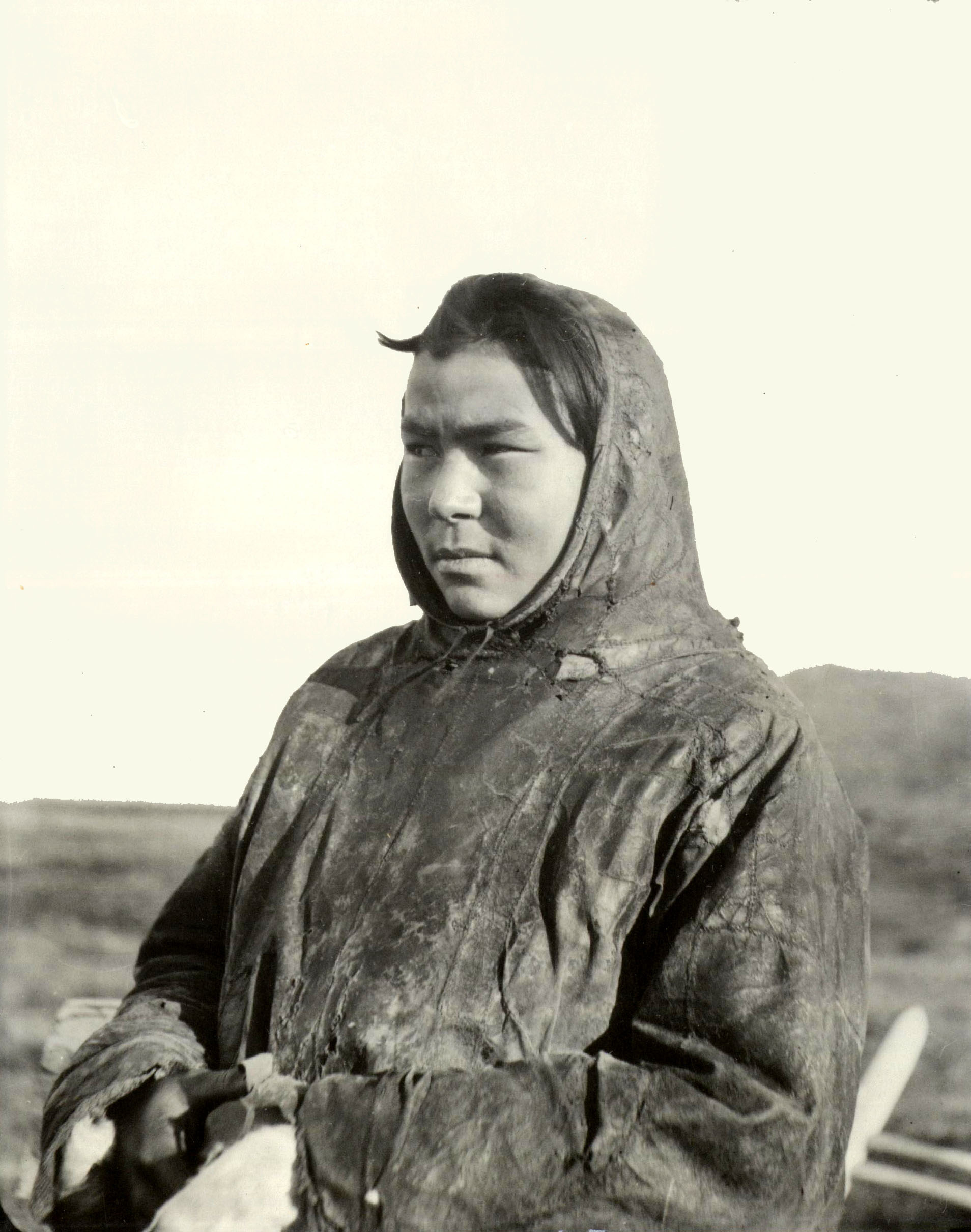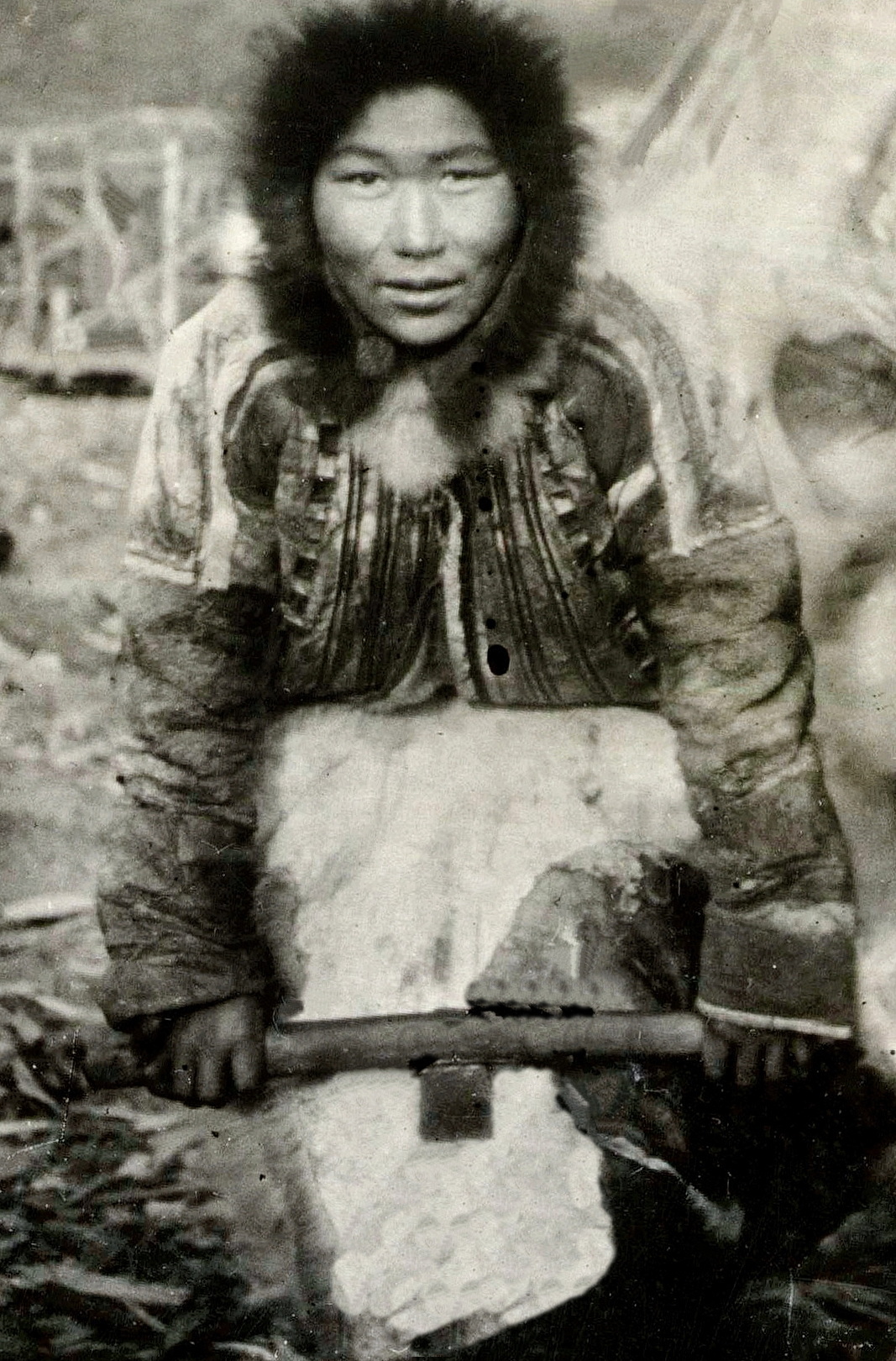General information
One of the smallest minorities of the North, the Enets reside in the Krasnoyarsk Territory. In pre-revolutionary scholarship, all Enets were referred to as the Yenisei Samoyeds. In the 1930s, linguist and ethnographer Georgiy Prokofiev introduced the ethnonym “Enets” into the academic vernacular. It is derived from the Enets
enete
/
enneche
meaning “a person, a man.”
The total number of Enets, according to the 2020 All-Russian Population Census, is 203 people (102 men and 101 women).
Historically, the Enets roamed the tundra and forest-tundra zones, which naturally divided them into two groups: the tundra and the forest Enets. Both groups differed in language and their traditional culture.
The
Tundra Enets
(
somatu
). The forest Enets called them
madu
, the Nenets
mado
, the Russians - the Khantai Samoyeds (after the name of the Khantai winter quarters, which is where they came to pay their fur tax in the pre-revolutionary times). In summer, they moved with their reindeer herds across the tundra between the Yenisei and the river Pur, in winter migrating to the south, to the Malaya Kheta River, and Lake Pyasino.
The
Forest Enets
(
pya bai
). The tundra reindeer-herding Enets called them
pe-bai
(
forest
bai
) or by the names of the main clan groups, for example,
Muggadi
,
Yuchi
, and
Bai
. The Nenets called this group
Mongkandi
and
Bai
, the Russians called them the Karasin Samoyeds (after the name of the Karasinsky winter quarters). They roamed in the forest zone south of what is now Dudinka.
The ethnic territory of the Enets bordered in the west with the Nenets (the nomadic Obdor Samoyeds); in the south - with the forest Nenets (the Kazym Samoyeds), the Selkup (the Turukhan Samoyeds or Ostyak-Samoyeds) and the Kets; in the east with the Evenks (Tungus); in the northeast with the Nganasans (the Pyasid Samoyad). Such multiculturality had a strong ethnocultural influence on the Enets, encouraging them to form kinship relations through marriage, which later would affect the size of the Enets population.
The Enets language belongs to the Samoyed group of the Uralic language family, which also includes the Nenets, Nganasan, and Selkup languages. It has two dialects: the tundra and the forest one, which are radically different from each other. Sometimes, the two groups identify themselves as vastly different from each other. The tundra Enets regard the forest group as the Nenets, who, in turn, refer to the tundra Enets as the Nganasans.
Most Enets are multilingual and are fluent in both Russian and Nenets. Many of them also understand the speech of the Evenks, Nganasans, and Dolgans. Some of them switched to the Nenets language and some tundra Enets opted for the Nganasan. Currently, the Enets, especially the representatives of the older generations, use the Enets language in their everyday interactions. There are very few native speakers left.
The Enets are one of the smallest minorities in the North. In the census of 1897, local administrators lumped the Enets together with the Nganasans while identifying them as “the Yenisei Samoyeds and Tavgians” (1326 persons). The more recent interpretation of the census materials contends that in 1897, there were 488 Enets, and in 1926, there were 482. The statistics of 1959, 1971, and 1979 indicate that the Enets were not counted separately. This might be the case because the official lists created to conduct the All-Russian censuses did not identify this ethnic group. In the places where they lived together in close-knit communities, they were recorded as either the Nenets or the Nganasans.
The population census of 1989 recorded 209 people who called themselves Enets. Very few Enets (mainly those from among the intelligentsia circles) actually called themselves by this ethnonym. The majority did not use the term, indicating their clan or tribal affiliation instead.
According to the All-Russian Population Census of 2002, the number of Enets was 237 persons. It has continued to decline ever since. In 2020, the Enets population was 227 persons (or 278, according to other sources). In anthropological terms, the Enets demonstrate similarities to both the Nganasans and the Nenets, revealing a greater degree of similarity with one or the other.
Administratively, the ethnic territory of the Enets was part of the Mangazeya
uezd
(district) of the Yenisei province. Currently, those few tundra Enets that still live there, mainly reside in two places: in the very north part of the village of Vorontsovo (Karaul), and in the vicinity of Tukhard, where they, together with the Nenets, roam the Tukhard tundra with their herds of reindeer.
The forest Enets live in the village of Potapovo of the Dudinsky urban settlement. Some of them moved to the Tukhard tundra, where they do traditional reindeer herding. In addition, some representatives of the people (or their descendants) live in the town of Dudinka, the villages of Ust-Avam, Khantayskoye Lake, and the east of the Peninsula.
Piсture 1. Enets in hunting clothes. Author Grigori Verbov, 1938. MAE. I-1162-93
Picture 2. Enets woman with a scraper. Author Grigori Verbov, 1938. MAE. I-1162-168
























































